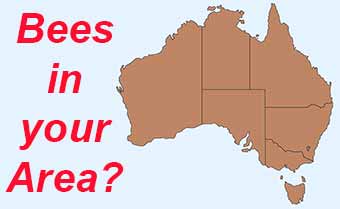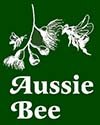NOMIA AND LIPOTRICHES BEES (Nomia & Lipotriches)
Aussie Bee > Native Bee Photo Gallery > Nomia Bees and Lipotriches Bees
In many Australian native bees, it is often the females foraging on flowers that people notice. However, in the Nomia and Lipotriches Bees, it is often the males that attract attention. As dusk falls, large groups of Nomia or Lipotriches Bees may begin to gather on a twig or on some long grass stems. More and more males come in, until there may be hundreds of even thousands of males clinging to one another in large clusters.
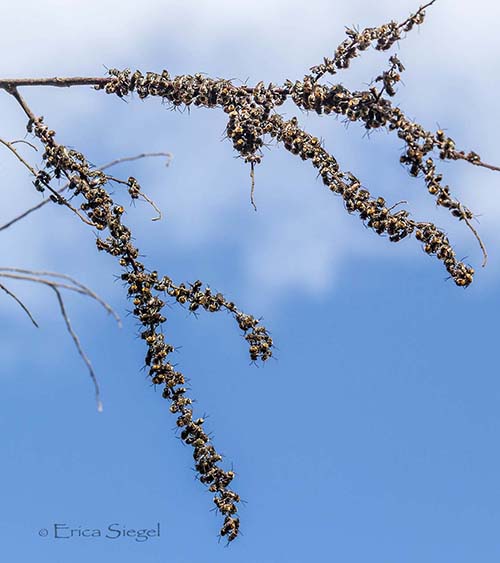
Above: this impressive large roost of Lipotriches male bees was photographed by Erica Siegel.
Australia currently has six described native species of Nomia Bees and 56 species of Lipotriches Bees. However, all of these bees were previously classified in the genus Nomia. Professor CD Michener changed the names of these bees in his classic book, The Bees of the World (2000).
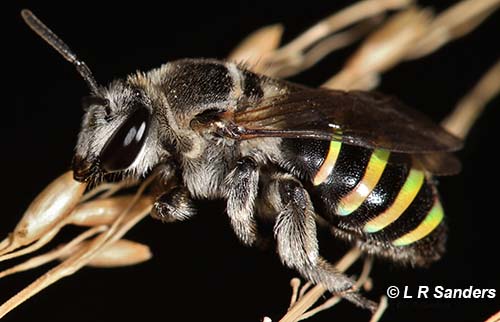
Above: the beautiful enamel-like yellow bands on the abdomen of this Nomia Bee can be seen in this stunning image by Laurence Sanders.
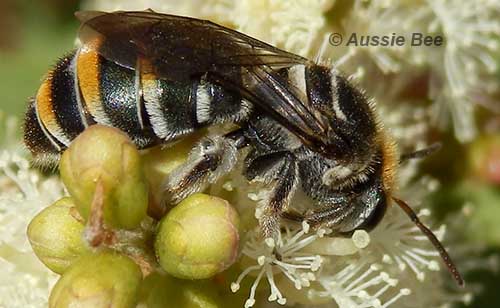
Above: This Lipotriches Bee, in comparison, has bands of golden and white hair across her abdomen.
The two groups can be distinguished by the appearance of their abdomen:
-- Nomia Bees have shiny enamel-like bands across their abdomen. The bands may be yellow, blue, green or white.
-- Lipotriches Bees do not have enamel like bands across their abdomen. Instead they usually have light coloured hair bands.
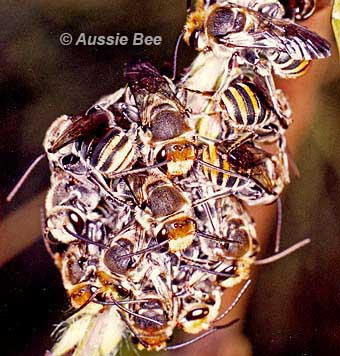
Above: these Lipotriches male bees were clinging to one another in the early morning, making a roost shaped like a ball.
Nomia and Lipotriches Bees dig nest burrows in the ground. In Lipotriches australica, up to three females may use the same nest and take turns guarding the entrance.
The Nomia and Lipotriches Bees are about 6-11 mm long and belong to the family Halictidae. Lipotriches Bees are found all over Australia, but Nomia Bees are most common in northern and eastern parts of the continent.
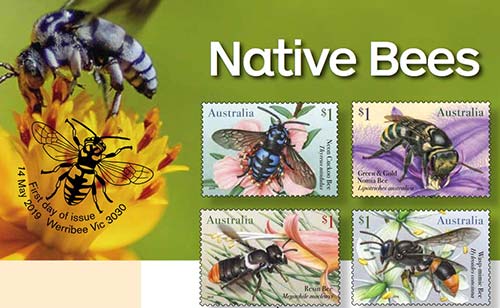
Above: These four beautiful postage stamps featuring Australian native bees were issued by Australia Post in May 2019! The upper right stamp shows the Green and Gold Nomia Bee. For more details, see the Stamp Bulletin, issue 359 (pages 6-8).
Flowers Loved by Native Bees
Other Galleries of Native Bee Photos.

